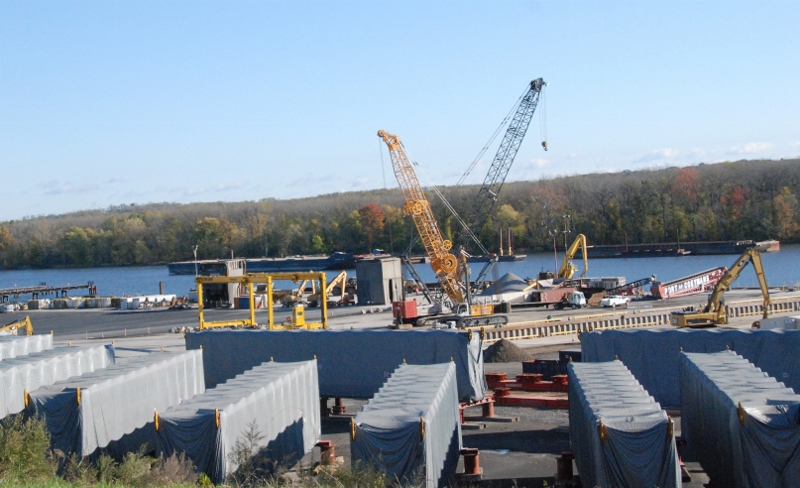The Hudson River valley was in its usual October glow of fall color, the lovely precursor to upstate New York’s annual frozen tundra, when I recently visited the Port of Coeymans Marine Terminal.
In all fairness, ice helped build this place. In the late 1800s the growing population and wealth of New York City built a demand for river ice harvested in winter. Coeymans – pronounced ‘kween-mans,’ the name of a Dutch settler in the 1600s – and other upriver landings were the source.
In 1896 two entrepreneurs, A.T. Powell and Thomas Minnock, got into the ice harvesting business, but as that trade declined they got into the booming brick industry, molding and baking the Hudson valley clay to build the classic red-brick neighborhoods of New York City and Albany.
The old Powell & Minnock Brick Yard hung on the longest. “Its closure in 2001 brought an end to more than three centuries of brick making on the Hudson,” authors Thomas E. Rinaldi and Robert J. Yasinsac wrote in their 2006 book “Hudson Valley Ruins: Forgotten Landmarks of an American Landscape.”
“Now, as its old buildings fall into ruin, this last of the Hudson River brickyards seems poised to go the way of its predecessors, and fade into memory.”

A 19th-century Hudson River brickyard at Catskill, N.Y. Brickcollecting.com image.
But another entrepreneur, Carver Laraway, had another idea, one really not so different from the earlier generations of the Empire State.
Laraway and a partner purchased the old P&M property in 2002, starting a restoration and redevelopment project that today includes 400 acres and is still growing.
From the restored 19th-century company office building near the riverfront, Stephen Kelly, vice president for sales and business development with the Carver Companies, gave me what he called “the nickel tour” of their operations.
Like Powell and Minnock a century before, the new operators saw how the needs of an increasingly urbanized and congested metropolitan region could be served by a remote location with marine transportation 150 miles north of the city. Where bricks were once loaded on barges, Coeymans Marine Transportation transports bulk construction materials down the Hudson to building sites.
On the ample 125-acre waterfront tract, steel is assembled into bridge decking and power plant components, and towed downriver. In the upland industrial park section of the property, warehouses store bulk commodities like salt and organic corn. In addition to the CMT fleet of tugs and barges, 40 to 45 bulk carriers now call at the port annually.
The port was instrumental in building the replacement for the 1955-vintage Tappan Zee Bridge over the Hudson, as the fabrication center and transport base for girder assemblies that went into the replacement Gov. Mario Cuomo Bridge.
In the company offices, a framed annual operating permit from the town of Coeymans notes the operating company is still P&M Brick LLC. Much bigger stuff is built here now.
In August CMT transported the tallest, heaviest barge load in Hudson history, floating the 130’ tall, 4,000-short-ton heat recovery steam generator, built on site at Coeymans, 170 miles south to a new power plant in Woodbridge, N.J. More massive steel parts are coming in for the next generator to be built.




